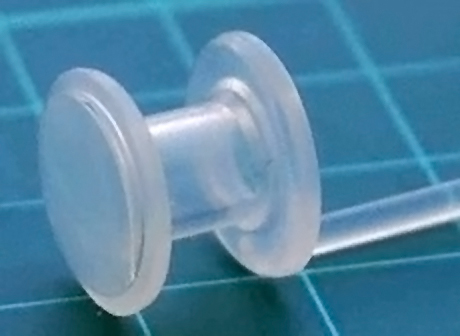Indwelling prostheses
The high level of skill required of the patient for the daily changing of the voice prosthesis led to the development of prostheses that can, once inserted, be left in the esophagotracheal fistula until they cease to work. This means that even more elderly and less skilled patients can be given a voice prosthesis, which has resulted in a significant increase in acceptance and more widespread use of voice prostheses.
The safe position of indwelling prostheses is guaranteed by much bigger flanges. The retaining tape that is attached to the tracheostoma has been dispensed with. The bigger flanges required special changing procedures that could only be carried out by a doctor.
The first of these prostheses (e.g. Groningen® prosthesis, Provox® 1 prosthesis) were fed retrograde into the esophagotracheal fistula through the mouth.
One further milestone in the development of indwelling prostheses was the invention of insertion methods that facilitated insertion of these indwelling prostheses from the front through the tracheostoma (e.g. Blom-Singer® Classic, Provox® 2).
These far pleasanter insertion methods meant that indwelling prostheses that were changed quickly through the tracheostoma became the European standard in voice rehabilitation following total laryngectomy.

